
Leptocereus grantianus (sebucan) is a sprawling or suberect, nearly spineless cactus, reaching up to 2 meters in height and 3 to 5 centimeters in diameter. Its elongated stems have from three to five prominent ribs with broadly scalloped edges. Ribs of young joints are thin, and the small areoles or spine-bearing areas may bear from one to three minute, nearly black spines which disappear as the joints grow older. The flowers are solitary at terminal areoles, from 3 to 6 centimeters long, and nocturnal. The outer perianth segments are linear, green, and tipped by an areole like those of the tube and ovary. The inner perianth segments are numerous, cream-colored, oblong-obvate, obtuse, and about 8 millimeters long. The fruit is subglobose to ellipsoid and about 4 centimeters in diameter.

Calyptronoma rivalis is a pinnately compound leaved palm species that is native to the Caribbean islands of Hispaniola and Puerto Rico. Its common names include palma de manaca and Puerto Rican manac.
Auerodendron pauciflorum is a rare species of flowering plant in the family Rhamnaceae. One English language common name is turtlefat. It is endemic to Puerto Rico, where it is known from only one population in Isabela. At the time the plant was federally listed as an endangered species by the United States in 1994, only ten individual plants were known to exist. By 1997, there were 19 known specimens.

Banara vanderbiltii is a rare species of plant in the willow family known by the common name Palo de Ramón. It is originates from Puerto Rico in the hills of Rio Lajas, and the east peak of "Tetas de Cayey" mountains in Salinas, where there are fewer than 20 known individuals left in the wild. At the time it was listed as an endangered species of the United States in 1987, there were only six plants remaining.

Buxus vahlii, or Vahl's boxwood, is a rare species of plant in the boxwood family. It is native to Puerto Rico and St. Croix in the U.S. Virgin Islands, where it is known from no more than four populations total. It has probably never been very common, but its distribution has been reduced by deforestation and other human disturbance of its habitat. At the time it was listed as an endangered species of the United States in 1985, it was thought to be endemic to Puerto Rico. Reports that it existed in Jamaica have not been confirmed. A few individuals have been located in St. Croix, some of which are within Sandy Point National Wildlife Refuge.
Myrcia neothomasiana, commonly known as Thomas' lidflower, is a rare species of plant in the family Myrtaceae. It is found on three Caribbean islands. There are fewer than 250 individuals total divided amongst the islands of Vieques in Puerto Rico, St. John in the United States Virgin Islands, and Virgin Gorda in the British Virgin Islands. It has been extirpated from the wild on Saint Thomas, U.S. Virgin Islands, where it was first described in 1855, and now only grows there in cultivation.

Eugenia woodburyana is a species of plant in the family Myrtaceae. It is endemic to Puerto Rico. It is a federally listed endangered species of the United States. It is threatened by habitat loss.
Pleodendron macranthum (chupacallos) is a rare species of tree in the family Canellaceae. It is endemic to Puerto Rico, where there are only three tiny populations remaining. Two individual plants are located in El Yunque and 8 to 10 plants remain in Río Abajo State Forest. This tree is a federally listed endangered species of the United States.

Schoepfia arenaria is an extremely rare species of hemiparasitic flowering plant in the Schoepfiaceae family. It grows as a small, multi-trunked tree. It is endemic to Puerto Rico, where it is found growing along the northern coast. A local Spanish vernacular name recorded for this tree is araña ('spider'). It has no common name in English.

Trichilia triacantha, the bariaco, is a species of plant in the Meliaceae family endemic to Puerto Rico.
Adiantum vivesii is a rare species of maidenhair fern known by the common name Puerto Rico maidenhair.
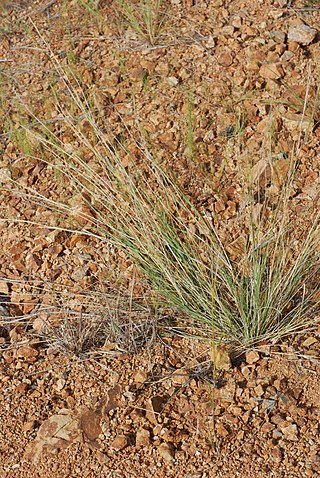
Aristida chaseae is a rare species of grass known by the common name Chase's threeawn. It is endemic to Puerto Rico, where it is known from two locations in the Cabo Rojo National Wildlife Refuge and the Sierra Bermeja. It is a federally listed endangered species of the United States. It cannot compete with introduced species of grasses, such as Brachiaria subquadripara, which are invading its habitat.
Aristida portoricensis is a rare species of grass known by the common name pelos del diablo. It is endemic to Puerto Rico, where it is known from two locations, one in a residential area of Mayagüez and one in the Sierra Bermeja. Two other known sites have been extirpated by development of the habitat. It is a federally listed endangered species of the United States.

Catesbaea melanocarpa is a rare species of flowering plant in the coffee family known by the common name tropical lilythorn. It is native to five Caribbean islands: Puerto Rico, St. Croix in the United States Virgin Islands, Antigua, Barbuda, and one island in Guadeloupe. The plant is threatened by habitat loss.
Cranichis ricartii is a rare species of orchid known by the common name Puerto Rico helmet orchid. It is native to Puerto Rico, where it is known from three locations in one forest. The plant has also been seen in Guadeloupe. The plant's rarity is the main reason for its listing as an endangered species of the United States.
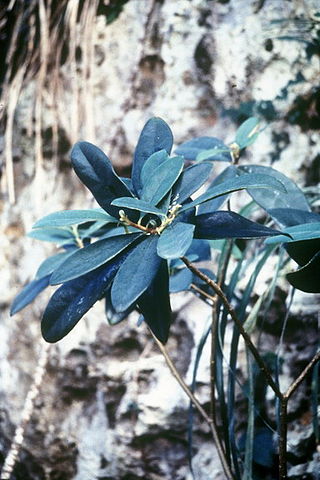
Daphnopsis hellerana is a rare species of flowering plant in the genus Daphnopsis of the family Thymelaeaceae. It is endemic to Puerto Rico, where there were only four populations remaining in 1992, with a total of 125 individuals. It was federally listed as an endangered species of the United States in 1988.
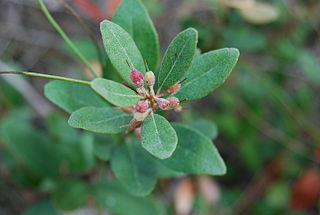
Lyonia truncata is a species of flowering plant in the family Ericaceae known as Dominican staggerbush.
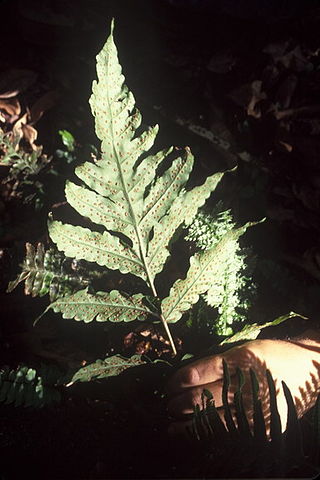
Tectaria estremerana is a rare species of fern known by the common name Puerto Rico halberd fern. It is endemic to Puerto Rico. It is a federally listed endangered species of the United States.
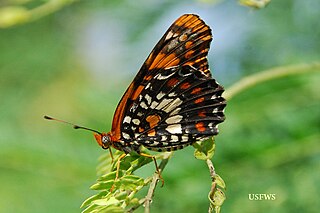
Atlantea tulita is a rare species of butterfly known by the common name Puerto Rico harlequin butterfly. This brush-footed butterfly is endemic to Puerto Rico. It is a candidate for United States federal protection as an endangered species. In 2011 a report found federal protection to be warranted, but it was precluded by other actions and it remains a candidate.














